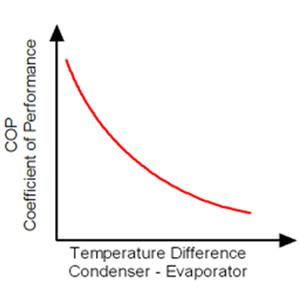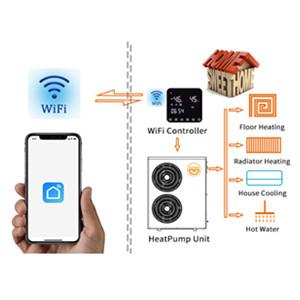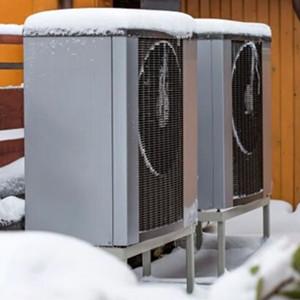Air Source Heat Pump Noise Reduction
The air source heat pump is an energy-saving product that absorbs heat in the air through the rotation of a motor, and the compressor produces heat. It is widely used in hot water heating and house heating; energy saving, safety, and environmental protection are its main characteristics; widely accepted by people Love; when many users choose, in addition to considering the price, brand, quality, how much noise is, where the installation is appropriate, and so on, we have to consider.1. The noise source of air source heat pump:
The start-up and operation of the compressor, the operation of the motor, the wind noise produced by the fan blades, the vibration of the unit, etc.; through the test in the practice room, the noise of the unit when it is working is generally 43~68 decibels, which is noise pollution at night, so we When choosing an installation place, it should be as far away from the bedroom or living place as possible.
2. Methods to reduce the noise of air source heat pumps:
1) Set the working time period of the air source heat pump unit to avoid affecting the night rest. The working time is short, and the unit configuration must keep up.
2) Install the air source heat pump unit in the basement (ventilated), on the roof or away from the bedroom, and install the air source heat pump unit away from the bedroom or the place where people live. If it is close to the bedroom or the place where people live, install sound insulation as much as possible Wall or computer room, of course, if the computer room is installed, the ventilation effect should be ensured.
3) The compressor packs soundproof cotton, and the air source heat pump unit base is equipped with a spring shock absorber, and the effect is general; install a soundproof screen between the unit and the room, but ensure that the unit is ventilated around the unit, and the room is equipped with sound insulation windows, the effect will be better.
4) Check whether the installation of the air source heat pump unit is stable, whether the screws are loose, and whether the host is vibrating.
5) Try to choose good quality motors and fans, and try to minimize the noise at the source.
6) Air sound treatment Air sound insulation is relatively easy to control the noise of the pump set. The air sound generated by the pump set generally does not exceed 85dB (A), and there is at least one floor space between the pump set and the owner's room. Generally, the airborne sound insulation of 120mm cast-in-place concrete is greater than 52dB, which is quite beneficial for isolating the airborne sound of the pump unit. But now the country has strict requirements on the indoor sound environment, so if the pump set is separated from the owner by a floor slab, special treatment is required for the sound insulation. Common methods include adding sound insulation covers, sound insulation ceilings, and Add sound absorption indoors.
7) System vibration isolation pump system vibration isolators are generally used for system vibration isolation. If the pump group vibration is relatively strong, the method of floating ground is preferred, because the floating ground has a better vibration damping effect and can play a frequency band that can reduce vibration. Also wider.
8) Pipeline vibration isolation treatment Add (replace) rubber soft connections for the pipes connected to the pump set. Generally, the length of the soft connection is short and the elasticity is poor, resulting in unsatisfactory overall vibration isolation effect. After replacement, the vibration isolation effect will increase significantly. For soft connection, use professional vibration isolation products with better vibration isolation performance, longer length and corrosion resistance.
9) Pipe support is used for vibration reduction treatment. Generally, the connection between the pipeline support and the ground is hard link, which causes the vibration of the pipeline to be transmitted to the building structure. The vibration reduction treatment under the support can better prevent the vibration energy from transferring to the building structure. spread.
10) Pipeline through-wall treatment Generally, the pipe and the wall are hardly connected, and a considerable part of the energy of the pipe vibration is transmitted to the building structure. Therefore, the pipe and the wall should be separated from the wall to prevent the energy transfer.
11) Pipeline damping and sound insulation bandaging The vibration and noise of the pipeline is relatively high, and the vibrating air sound will also affect the residents. Therefore, comprehensive damping and sound insulation bandaging should be carried out on the pipeline to reduce the vibration of the pipeline on the one hand, and on the other hand, it can also reduce the vibration of the pipeline. Play the role of isolating airborne sound.
Generally speaking, the air source heat pump is noisy when it is running. When we use it, we can improve it through the outside world, such as building a computer room and soundproof walls; the unit itself has sound damping measures; for some special places, we can use The unit is set to timer switch function.
Leomon Technology is a professional manufacturer of air source heat pumps. If you need to buy or install an air source heat pump. Please contact us. I will give you the most professional advice. Or follow our official website: https://www.chinaheatpumps.com/






